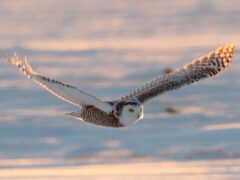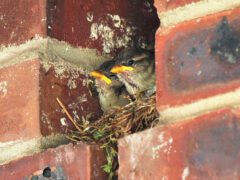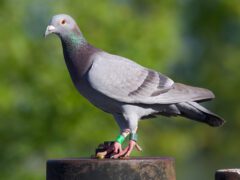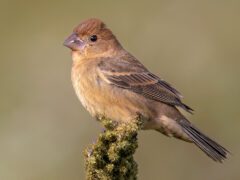The Four Keys to ID
- Size & Shape
A medium-sized seabird with a heavy body and fairly short, pointed wings. It has a small head and relatively short neck. The bill is straight and sharply pointed.
Relative Size
Larger than a Pied-billed Grebe, smaller than a Surf Scoter.

 crow-sized
crow-sizedMeasurements
- Both Sexes
- Length: 11.8-12.6 in (30-32 cm)
- Weight: 11.3-17.1 oz (320-485 g)
- Wingspan: 20.5-22.8 in (52-58 cm)
© Alvan Buckley / Macaulay Library
- Color Pattern
- Behavior
- Habitat
Regional Differences
Ornithologists have described up to 7 subspecies, 2 or 3 of which nest in North America. In Maine and southeastern Canada, arcticus is the nesting subspecies, while in Alaska, mandtii is the nesting subspecies. Some ornithologists also recognize ultimus as a distinct subspecies in the High Arctic of eastern Canada and Greenland; others combine it with mandtii. In adult nonbreeding plumage, mandtii and ultimus have snowy white body plumage; juvenile mandtii/ultimus have white-tipped secondary feathers, forming a white trailing edge to the wing. Some Black Guillemots that nest in western Greenland are mostly black in breeding plumage7, with little or no white on the wings. Such “dark-morph” birds are also much darker in nonbreeding plumage than others in this population, which acquire mostly snow-white plumage in winter.





















